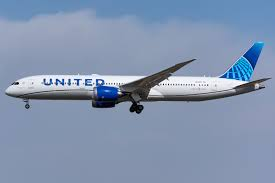A United Airlines flight diverted to Chicago after cockpit screens went blank.
The Boeing 787 Dreamliner was flying over Canada’s Hudson Bay.
Pilots could still use some autopilot systems and communicate with the ground via satellite and radio.
A United Airlines plane diverted and made an unplanned landing after cockpit screens went blank while it was flying over Canada’s far north.
The incident occurred on a Boeing 787 Dreamliner operating Flight 231 from Los Angeles to London on September 26. The airline told Business Insider that there were 165 passengers and 11 crew members on board.
According to a Transportation Safety Board of Canada report, while over Hudson Bay, the “captain’s primary flight display and navigation display failed to a blank display.”
Both flight management computers also entered “a degraded mode with limited capabilities.”
The TSBC’s report added that this meant the plane was left without lateral navigation or LNAV — an autopilot mode that involves following a programmed flight path.
An emergency was declared, and the 787 changed course toward Chicago.
Pilots could still use some other key autopilot features and communicate with the ground via satellite and radio.
Despite the computer difficulties, the pilots used “alternate navigation and vectors” to land at Chicago O’Hare International Airport without further incident.
In a statement shared with Business Insider, a United Airlines spokesperson confirmed that the plane diverted “to address a potential technology issue.”
“The flight landed safely and all passengers deplaned normally at the gate,” they added. “We arranged for a different aircraft to take our customers to their destination.”
The TSBC recorded the incident as a class 5 occurrence, meaning it is not subject to a comprehensive investigation.
Last week, United Airlines was cleared by the Federal Aviation Administration after a six-month safety review. The regulator said it found no “significant safety issues” following several incidents early in 2024, including a tire falling off a Boeing 777 during takeoff.



